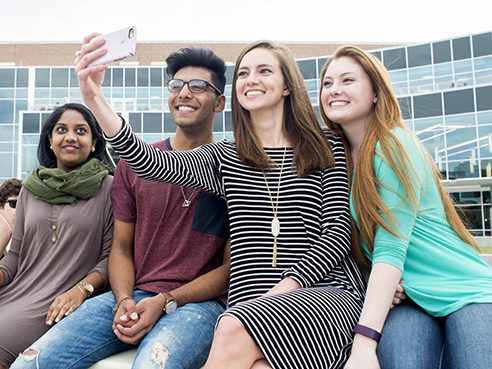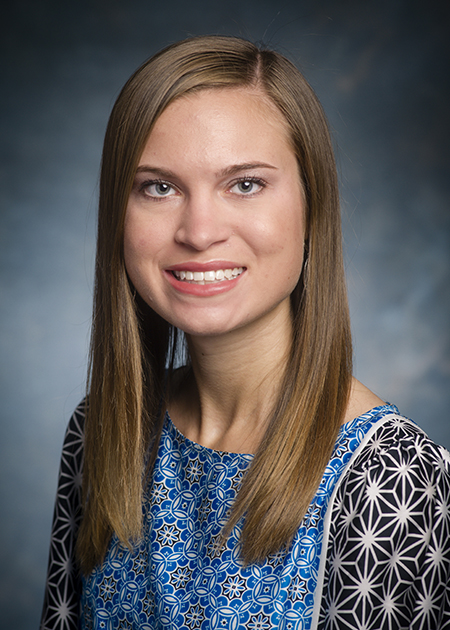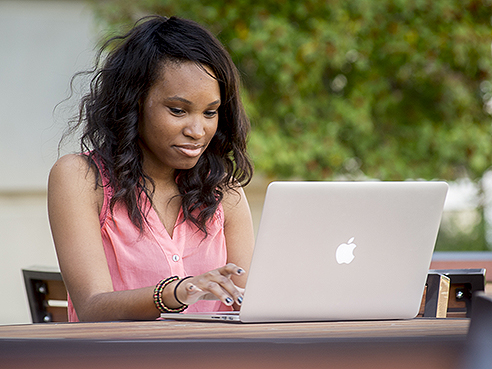 “Sophomores can feel like they’re forgotten, like their universities don’t support them as much. They can become more disconnected socially or academically and have a lack of motivation.”The way Paton Roden explains it, sophomores are in an odd place when they return for their second year of college. Freshmen classes are the focus of special welcoming initiatives, while third- and fourth-year students have likely discovered an academic path, developed research interests and started to plan for post-undergraduate ventures. In comparison, sophomores can find themselves rudderless and disengaged.
“Sophomores can feel like they’re forgotten, like their universities don’t support them as much. They can become more disconnected socially or academically and have a lack of motivation.”The way Paton Roden explains it, sophomores are in an odd place when they return for their second year of college. Freshmen classes are the focus of special welcoming initiatives, while third- and fourth-year students have likely discovered an academic path, developed research interests and started to plan for post-undergraduate ventures. In comparison, sophomores can find themselves rudderless and disengaged.
That’s where UAB’s Second-Year Experience (SYE) program begins. SYE supports and encourages second-year students to become more involved in and engaged with the campus community to enhance their academic and professional success and help develop a personal identity and purpose.
“It’s generally understood second-year students can feel a letdown from their first year,” said Roden, who leads the SYE. “They can feel as if they’re forgotten — as though their universities don’t support them as much. They can become more disconnected socially or academically and lack motivation.”
A student’s second year is pivotal to their college education, Roden said, and SYE navigate offers resources, events and opportunities specifically for their needs.
New beginnings
When UAB last administered its biennial Noel Levitz survey, it revealed a dip in student satisfaction among sophomores: second-year students were significantly less satisfied than first-year students on seven of the 12 scales. Although sophomores were happy with academic advising, campus support services, instructional effectiveness, recruitment and financial aid and registration, they still felt there was room for improvement in other areas.
|
“Institutions are looking at UAB as an innovative institution that moved forward in developing a second-year experience program.” |
Those results weren’t surprising. A 2013 non-UAB-affiliated report from Noel Levitz said approximately 25 percent of second-year students at four-year institutions couldn’t say they “felt energized” by their classroom experience. Still, Roden said the results weren’t good enough for Vice President of Student Affairs John Jones, Ph.D., who assembled a committee to start a second-year program to tackle the issues raised by students in the survey.
One of Roden’s first actions was to survey dozens of U.S. institutions in March to gauge their second-year student satisfaction and ascertain what, if any, programming they had or planned to pursue. To her surprise, more than 60 people from various institutions responded and asked for the findings from the survey.
Roden decided to host two free webinars in early June as a practical way to distribute that information. Registration skyrocketed nearly 500 percent from the 60 original parties — 290 institutions registered for the webinars from nearly every state in the nation plus England, Ireland, Canada and Australia.
“Other institutions have had a second-year program for a few years, but it is still early to be developing one,” Roden said. “As it becomes more of a best practice in higher education, UAB will be in the forefront.”
 Paton Roden, Second Year Experience coordinator
Paton Roden, Second Year Experience coordinator
From the source
To best tailor the Second-Year Experience program to UAB sophomores, Roden said there was no better way to do that than to involve students themselves through the SYE Street Team, Council and Global Learning Initiative.
The SYE Street Team helps market and promote SYE programs, activities and events to sophomores on campus through word-of-mouth. Students like listening to their peers more than administrators, Roden said, and the SYE Council advocates for their needs, makes recommendations and works with the SYE office.
“The council bridges the gap and shares student voices with me and other staff members,” Roden said.
The SYE Global Learning Initiative (GLI), a partnership between Student Housing and Residence Life and Career and Professional Development, provides sophomores the opportunity to gain experience in a global workforce.
|
To best tailor the Second-Year Experience program, there was no better way to do that than to involve students themselves. |
The GLI, funded through a QEP grant, is a particularly engaging second-year program, Roden said, because it enables students to participate on an international level without requiring them to jump on a plane or train. Beginning this fall, participants will meet weekly to Skype students from the University of the Free State in Bloemfontein, South Africa, and partner to solve a relevant, timely social problem.
“Not all students can travel abroad,” Roden said. “This gives those students the opportunity to think globally.”
Looking forward
The Second-Year Experience program also has big plans for the way life for sophomores at UAB will look in the future, including ways to help students learn resiliency and develop coping mechanisms for difficult situations that can arise in academia.
Right now, SYE is partnering with the UAB Graduate School to provide second-year students resources on alternative graduate programs if they discover their initial plan might not be their true calling.
“If students see their first big failure as freshmen or sophomores, they can become easily overwhelmed and disengaged,” Roden said. “This can be their first realization that things might not work out like they’d planned, especially with their chosen major or coursework.”
 Helping students navigate tough times can help them find a different kind of success at UAB — one that might be even more rewarding.
Helping students navigate tough times can help them find a different kind of success at UAB — one that might be even more rewarding.
In this situation, resiliency is key, she added, and helping students navigate those tough times can help them find a different kind of success at UAB — one that might be even more rewarding.
“We try to teach students that it’s OK if they do not get into a certain chosen program or track,” Roden said. “The Graduate School has many master’s programs and research focuses. Concentrating on these possibilities can help students get out of that sophomore slump and get them more excited to be involved on campus.”
SYE also is piloting a mentoring program based on survey results that revealed 85 percent of respondents believe a mentor program is vital to student success. SYE is recruiting a group of upper-class students, primarily juniors, to pair with sophomores in a mentor-mentee relationship.
“Juniors are just barely removed from their own second year,” Roden said. “The mentoring program will focus on juniors helping second-year students by sharing their own experiences, telling them it’s OK to feel undecided or to be struggling and to help them guide the conversation on professional development opportunities.”
Sharing the knowledge
UAB established itself as a frontrunner in second-year experience programming by sharing their survey information through the webinars, but we shouldn’t stop there, Roden said. The SYE team also plans to take the information presented in the webinars and submit it for publication in a higher-education journal. They also asked webinar participants if they were likely to attend a future webinar UAB, and 90 percent said they were likely or extremely likely to attend, Roden reports.
|
“We are seeing students react positively and find more stability at UAB, which we think will grow into security and contentment.” |
UAB’s SYE team also plans to partner more with the University of South Carolina’s National Resource Center for the First-Year Experience, which also has generated data on sophomore experiences.
“It’s good to foster those connections and get the conversation going with other institutions,” she said. “We’ve got UAB on the list of institutions that are leading research and making a difference in this field.”
The SYE Street Team, SYE Council, the GLI and mentorships are some of SYE’s first steps toward resolving the issues students raised in the Noel Levitz satisfaction survey. Roden said that as programming changes and grows in the coming years, one focus will remain the same: helping second-year students find their fit at UAB and have the best possible experience on campus.
“By creating an environment in which second-year students have a voice and their feedback and ideas are actively heard and implemented, UAB is showing a commitment to students on campus,” Roden said. “We are seeing students react positively and find more stability at UAB, which we think will grow into security and contentment.”
“And the best part is,” she added, “SYE is only getting started.”
